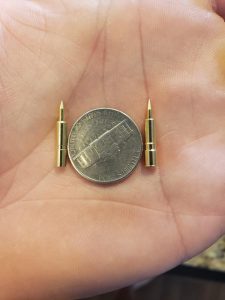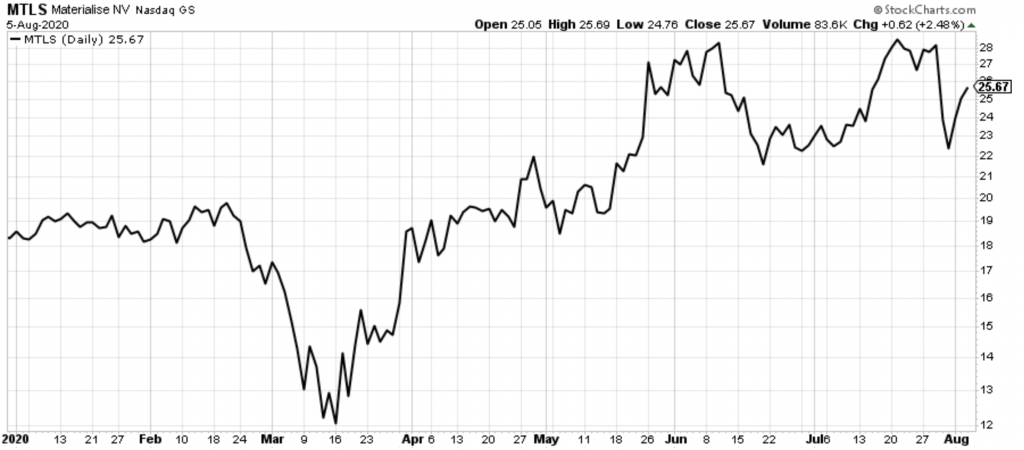It seems like everything old is new again.
3D printing stocks are so 2014, but last year, the 3D printing market grew to become $11.58 billion globally.
And it’s expected to increase by 14% yearly for the next seven years with 77% of that market is industrial printers.
According to a survey by Essentium, 47% of the companies surveyed in 2019 were using additive manufacturing compared to 17% the previous year. Additive manufacturing describes adding materials to create an object like 3D printing and is less wasteful than traditional manufacturing which cuts away at materials.
That jump from 17 to 47 percent is no doubt impressive, but still less than expected for 2019. So why isn’t 3D printing more popular?
The cost of equipment still remains one of the biggest deterrents to switching from traditional manufacturing. On the flip side, advancement in the materials side of the technology has been helping its appeal. Polymer, metal, ceramic…it can all be 3D printed. Even electronics can be printed these days.
The development of 5G will also help move this technology forward. It will allow for automation and AI to control industrial printers seamlessly and effectively.
Even still, 3D printing has had many wins over the past few years.
NASA has produced a metal 3D printed rocket engine fuel pump using 45 fewer parts than when made with conventional manufacturing. Thales Alenia Space produced titanium brackets for satellites that are 35% lighter than those manufactured by traditional means. Porsche uses 3D printing to produce spare parts for its rare and classic cars.
Last year, Tel-Aviv University successfully 3D printed a heart using human cells. It wasn’t full scale, but still. That’s a nudge to the huge potential in bioprinting technologies.
Even GM installed a new fleet of 3D printers at the end of 2019. The company has been using the technology for prototyping since 1989. And 75% of the parts in its 2020 Chevy Corvette were 3D printed.
Once the pandemic happened, GM retooled its 3D printers to help in the race for PPE. This included a 30,000-unit order of critical care ventilators from the U.S. Dept of Health and Human Services to be delivered before the end of August. Plus, in mid-July, it received N95-level certification for the respirators it had been printing.
GM isn’t the only company that is trying to get creative and use 3D printing to help get through the pandemic.
Over 30 Years of Experience in the Industry
Founder of Materialise NV (NASDAQ: MTLS) Wilfirend Vancraen had a vision that 3D printing would make a difference in the world. He started the business with one Stereolithography machine in 1990. Since he had a background in Biomechanics, Fried saw the potential to print anatomical models using CT image data.
Since then, the company’s printing solutions can be applied to a variety of other industries including automotive, art and consumer goods.

Grab a piece of paper and pen to write this down…
Because you’re about to see the name and ticker symbol of the ONLY 5G STOCK every investor should own.
You can get the name and ticker of this company right here, no strings attached. But you better act fast…
Because the Federal Communications Commission, the government agency in charge of 5G, just scheduled a major announcement that would send shares soaring once announced.
Don't miss out. Click Here to Get #1 5G play for 2020 before the next market close.
Back in March, at the start of the pandemic, the company designed a 3D printed door opener. This gadget could be attached to door handles making it possible to open and close doors with a sleeved arm instead of a bare hand. It offered the printable design for free.
Then in April, it developed a solution to create high positive pressure to deliver oxygen without the use of a ventilator. The 3D printer connector utilizes other standard hospital equipment to transition patients off ventilators earlier.
Investors are starting to take notice.

Since the beginning of the year, shares have seen an increase, but that doesn’t mean it’s time to invest.
Last week the company announced it’s earnings, and it was clear that it was feeling the impact of the Coronavirus. Total revenue decreased by 21% compared to the same quarter in 2019. When broken down by segment, revenue from the software segment increased by 2.4%.
The management is continuing with the goal to limit the impact of Coronavirus on its long-term plans. This landscape is a perfect time for its Mindware advisory service which offers strategic insights and plans for companies to address business challenges with 3D printing.
The company has a fairly strong balance sheet. So, if it can turn those revenue numbers around in the wake of the pandemic, you should jump onboard.
To your prosperity,
Joshua M. Belanger
Executive Publisher & Founder